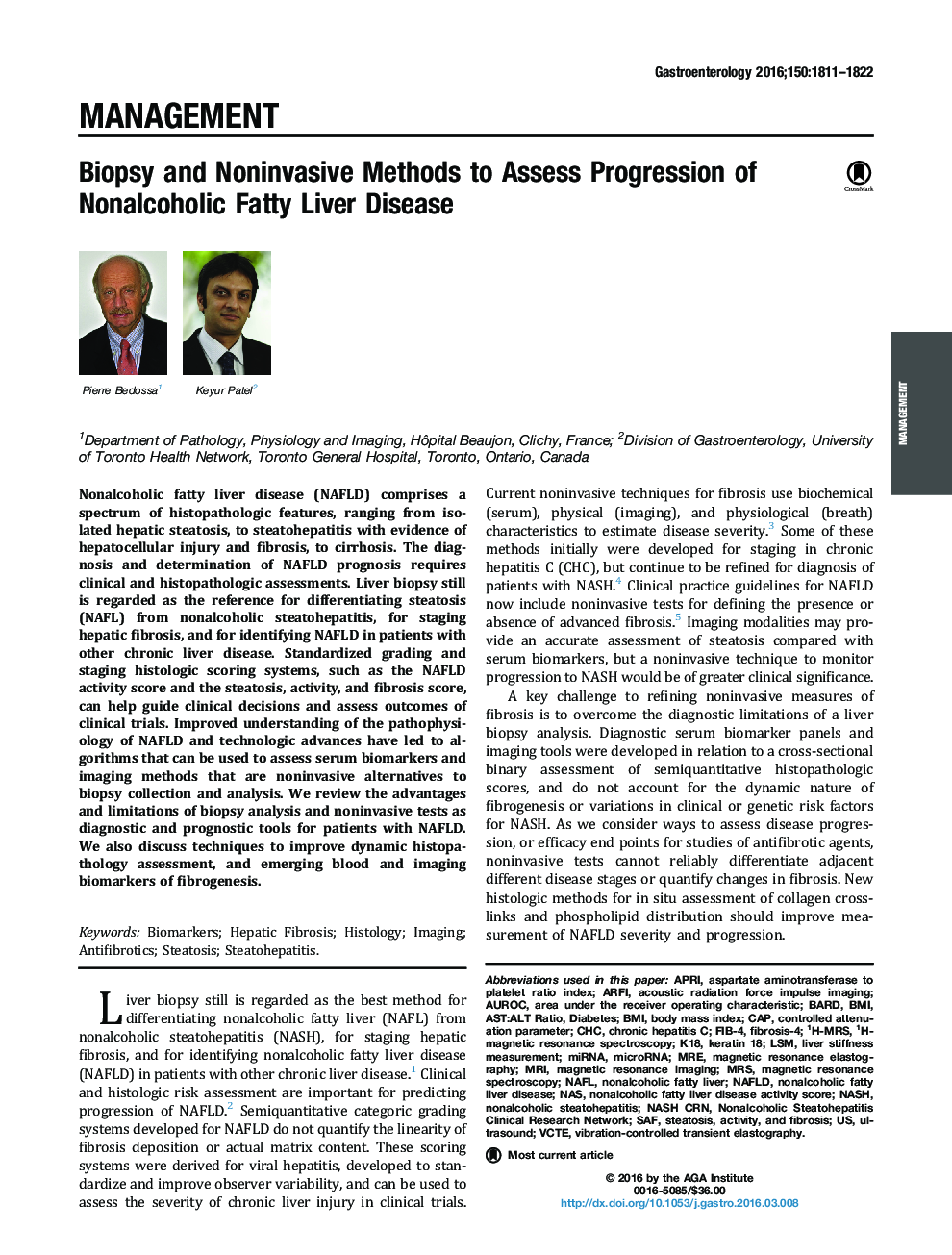| Article ID | Journal | Published Year | Pages | File Type |
|---|---|---|---|---|
| 3291959 | Gastroenterology | 2016 | 16 Pages |
Abstract
Nonalcoholic fatty liver disease (NAFLD) comprises a spectrum of histopathologic features, ranging from isolated hepatic steatosis, to steatohepatitis with evidence of hepatocellular injury and fibrosis, to cirrhosis. The diagnosis and determination of NAFLD prognosis requires clinical and histopathologic assessments. Liver biopsy still is regarded as the reference for differentiating steatosis (NAFL) from nonalcoholic steatohepatitis, for staging hepatic fibrosis, and for identifying NAFLD in patients with other chronic liver disease. Standardized grading and staging histologic scoring systems, such as the NAFLD activity score and the steatosis, activity, and fibrosis score, can help guide clinical decisions and assess outcomes of clinical trials. Improved understanding of the pathophysiology of NAFLD and technologic advances have led to algorithms that can be used to assess serum biomarkers and imaging methods that are noninvasive alternatives to biopsy collection and analysis. We review the advantages and limitations of biopsy analysis and noninvasive tests as diagnostic and prognostic tools for patients with NAFLD. We also discuss techniques to improve dynamic histopathology assessment, and emerging blood and imaging biomarkers of fibrogenesis.
Keywords
vibration-controlled transient elastographyAUROCFIB-4CHCNASH CRN1H-MRSNASNAFLMRSK18MRESAF1H-magnetic resonance spectroscopyNAFLDVCTESteatohepatitisnonalcoholic steatohepatitisAcoustic radiation force impulse imagingMRIliver stiffness measurementMagnetic resonance elastographyBARDAPRiHistologyNonalcoholic fatty liver diseaseImagingMagnetic resonance imagingSteatosisLSMbody mass indexBMInonalcoholic steatohepatitis clinical research networkmagnetic resonance spectroscopyUltrasoundFibrosis-4Hepatic fibrosisArea under the receiver operating characteristicARFIMicroRNAMiRNAaspartate aminotransferase to platelet ratio indexBiomarkersNonalcoholic fatty liver disease activity scoreNash chronic hepatitis CControlled attenuation parameterNonalcoholic fatty liverkeratin 18CaP
Related Topics
Health Sciences
Medicine and Dentistry
Gastroenterology
Authors
Pierre Bedossa, Keyur Patel,
